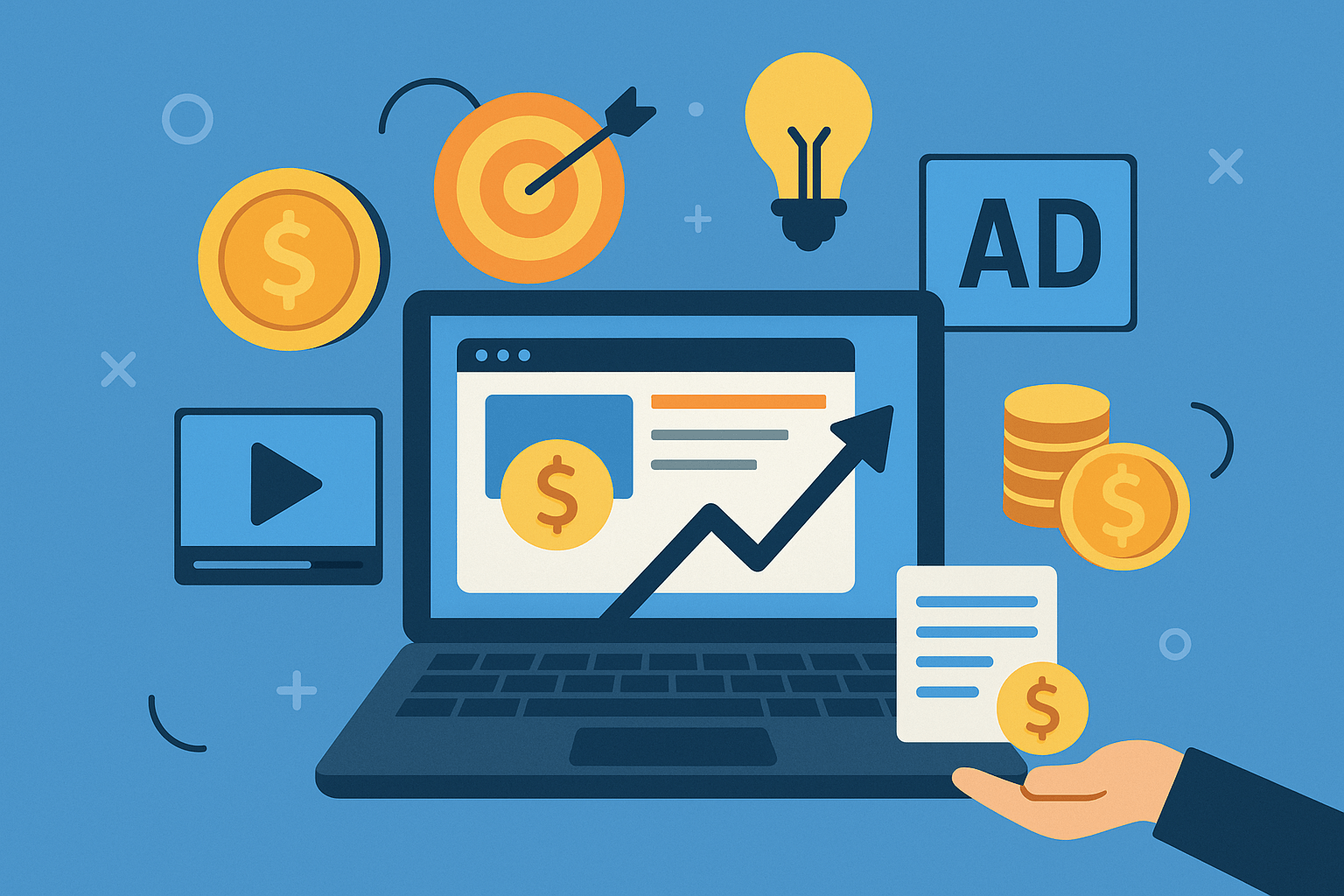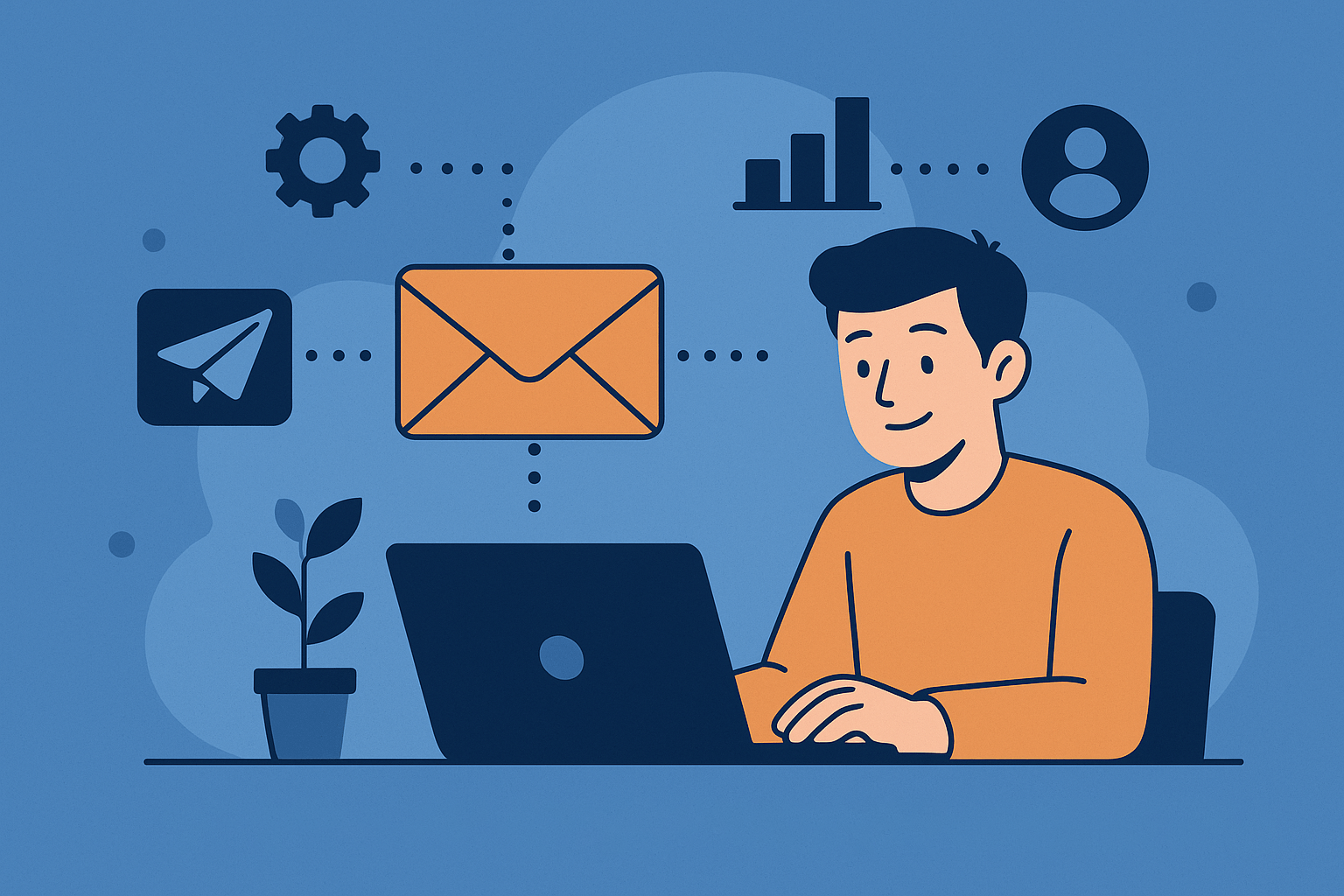What is Online Monetization? A Beginner’s Overview
Table of Contents
- What is Online Monetization?
- Why Monetize Online?
- Common Online Monetization Methods
- 1. Advertising
- 2. Affiliate Marketing
- 3. Selling Products or Services
- 4. Subscriptions and Memberships
- 5. Sponsored Content
- How to Get Started
- Step 1: Choose Your Platform
- Step 2: Build Value First
- Step 3: Pick Your Monetization Strategy
- Step 4: Comply with Legal and Platform Policies
- Challenges to Expect
- Tools to Help You Monetize
- Conclusion
In today’s digital-first world, making money online isn’t just possible—it’s more accessible than ever. Whether you’re a content creator, a small business owner, or simply curious about earning from your online presence, understanding online monetization is a great first step.
This beginner-friendly guide will walk you through the basics, common methods, and tips to get started.
What is Online Monetization?
Online monetization refers to the process of earning income through digital platforms or web-based activities. This can include placing ads on your website, selling digital products, offering subscriptions, or leveraging affiliate marketing.
Think of your online presence as digital real estate. Just as a physical store earns money through sales, your blog, YouTube channel, or social media can also generate revenue with the right strategy.
Why Monetize Online?
There are several reasons why people turn to online monetization:
- Flexibility – Work from anywhere, anytime.
- Scalability – Digital products or content can reach a global audience.
- Low overhead – Many online income streams require minimal upfront costs.
Whether you’re looking to create a side income or build a full-time business, online monetization offers many pathways to success.
Common Online Monetization Methods
1. Advertising
One of the most well-known ways to earn online is through ads.
- Display Ads: Platforms like Google AdSense let you earn money when users view or click ads placed on your website.
- Video Ads: YouTubers can monetize their videos through the YouTube Partner Program.
- Native Ads: These are seamlessly integrated with your content (e.g., sponsored articles).
2. Affiliate Marketing
Promote products or services and earn a commission when someone buys through your link. Popular affiliate networks include:
- Amazon Associates
- ShareASale
- CJ Affiliate
This method is ideal for bloggers or influencers who recommend tools, gear, or services.
3. Selling Products or Services
Your website can double as a storefront. Options include:
- Digital Products: E-books, courses, templates
- Physical Products: Print-on-demand merchandise
- Freelance Services: Writing, design, coaching – if you’re offering your skills independently, consider learning more in our beginner’s guide to freelancing.
4. Subscriptions and Memberships
Offer premium content or features behind a paywall. Tools like Patreon or Substack let creators build exclusive communities.
5. Sponsored Content
Brands may pay you to publish content that promotes their product or service. It’s important to disclose sponsorships for transparency and to follow AdSense guidelines.
How to Get Started
Step 1: Choose Your Platform
You can monetize via a blog, YouTube channel, podcast, or even social media profiles. Choose where your strengths lie and where your audience hangs out.
Step 2: Build Value First
Before making money, focus on providing value. Grow your traffic, build trust, and consistently publish quality content.
Step 3: Pick Your Monetization Strategy
Not all strategies fit every platform. For example:
- Blogs: Ads + Affiliate links
- YouTube: Video Ads + Sponsorships
- Instagram: Sponsored posts + Affiliate marketing
Step 4: Comply with Legal and Platform Policies
Make sure to disclose paid promotions and follow each platform’s monetization rules. Also, check local tax obligations.
Challenges to Expect
- Slow Growth: It takes time to build an audience.
- Platform Dependence: Relying too much on one channel (e.g., YouTube or Instagram) is risky.
- Algorithm Changes: Monetization opportunities may fluctuate based on algorithm updates.
Consistency, patience, and adaptability are key.
Tools to Help You Monetize
Here are some tools to ease your monetization journey:
- Google Analytics – To monitor traffic
- Rank Math or Yoast SEO – To improve discoverability
- Canva – To design content or products
- Gumroad / Ko-fi / Buy Me a Coffee – To sell directly to your audience
Conclusion
Online monetization isn’t a get-rich-quick scheme. But with the right mindset, strategy, and persistence, you can turn your passion into profit. Whether you’re sharing knowledge, creating videos, or running a blog, the digital world is full of opportunities waiting to be tapped.
So what are you waiting for? Start experimenting, keep learning, and take your first step toward earning online.







